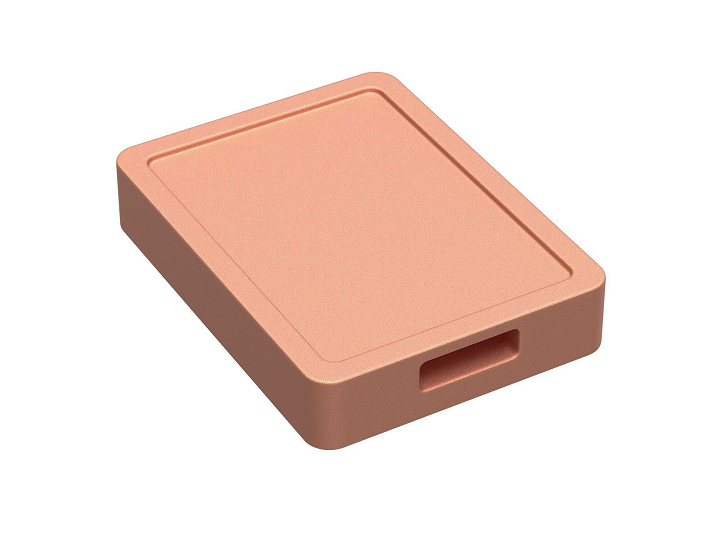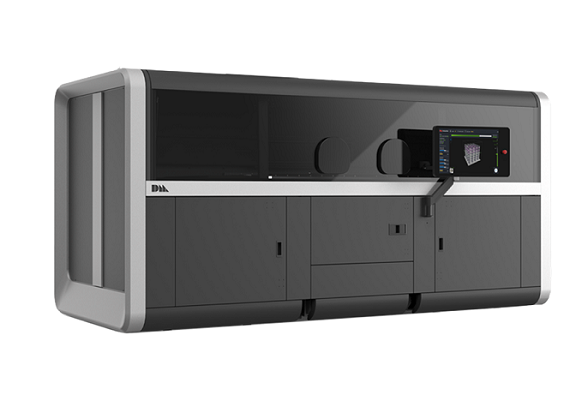With revenues shooting up but net losses reported at nearly $67 million, Desktop Metal (NYSE: DM) is keeping its nose to the grindstone, announcing a large order from a German automobile manufacturer and qualifying yet another metal material—pure copper—for 3D printing its Production System platform, following 420 stainless steel, D2 tool steel, nickel superalloy IN625, 4140 low-alloy steel, and others. This qualification and characterization by Desktop Metal’s expert materials science team will allow for the mass production of high-performance copper 3D printed parts on the Production System for electronics, automotive, and aerospace applications.
Commercially pure copper, which Desktop Metal qualified for use with its Studio System last year, is the world’s third most-consumed industrial metal, and thanks to its high electrical and thermal conductivity, is a sought-after material for AM applications, like heat sinks and heat exchangers, induction coils, manifolds, combustion chambers, and cold plates, that need electricity or heat transfer.
“Copper has been a highly requested material from many of our customers and prospects, and has applications spanning a broad variety of industries, from thermal hardware found in air and liquid cooling systems to conformally cooled coils for transmission of high frequency currents. We are excited to be able to expand our extensive Production System materials portfolio to support customers looking to 3D print electrically and thermally conductive components at scale and at a fraction of the cost of conventional manufacturing methods,” said Jonah Myerberg, Co-Founder and CTO of Desktop Metal.
The Production System, which combines Desktop Metal’s engineered binders with an open material platform, uses the company’s patent-pending Single Pass Jetting (SPJ) technology, which enables incredibly fast build speeds, and can now be used to 3D print commercially pure (> 99.95% purity), high-performance, geometrically complex copper parts at scale. Better yet, the parts can be printed in just one step, rather than having to solder several copper components together—definitely a time saver, and a less wasteful method that’s much less likely to see a lot of errors. Binder jetting with pure copper means that users can fabricate designs that they wouldn’t be able to with more traditional methods of manufacturing, like conformal cooling channels and lattice structures.
Another major application for pure copper 3D printed on the Production System is a liquid cooling plate, which regulates temperature on high-performance microprocessors. To cool the chip attached to the outer body, coolant flows through the fins, which offers a decent-sized surface area for transferring heat from the passing fluid to the heat sink. Traditional subtractive manufacturing processes for making this plate means machining and putting together several components, which adds time, capital, and waste to the process, as well as requiring skilled laborers that have to deal with, as Desktop Metal put it, “achieving precision and repeatability” in a “small form factor.”
Now, thanks to Desktop Metal’s Production System being able to use qualified pure copper, users can produce the part as just a single component, which means less lead time, cost, waste, and operational difficulties. In fact, the SPJ 3D printer can print hundreds of these copper cooling plates a day.
Subscribe to Our Email Newsletter
Stay up-to-date on all the latest news from the 3D printing industry and receive information and offers from third party vendors.
You May Also Like
Precision at the Microscale: UK Researchers Advance Medical Devices with BMF’s 3D Printing Tech
University of Nottingham researchers are using Boston Micro Fabrication‘s (BMF) 3D printing technology to develop medical devices that improve compatibility with human tissue. Funded by a UK grant, this project...
3D Printing Webinar and Event Roundup: April 21, 2024
It’s another busy week of webinars and events, starting with Hannover Messe in Germany and continuing with Metalcasting Congress, Chinaplas, TechBlick’s Innovation Festival, and more. Stratasys continues its advanced training...
3D Printing Webinar and Event Roundup: March 17, 2024
It’s another busy week of webinars and events, including SALMED 2024 and AM Forum in Berlin. Stratasys continues its in-person training and is offering two webinars, ASTM is holding a...
3D Printed Micro Antenna is 15% Smaller and 6X Lighter
Horizon Microtechnologies has achieved success in creating a high-frequency D-Band horn antenna through micro 3D printing. However, this achievement did not rely solely on 3D printing; it involved a combination...
































